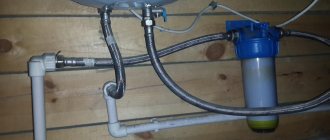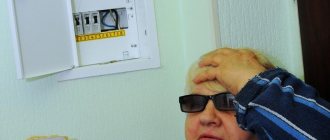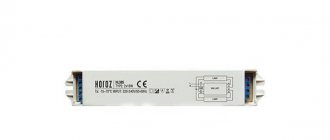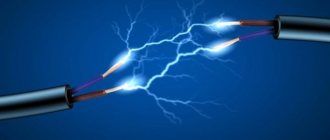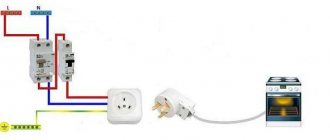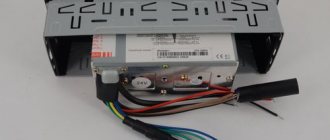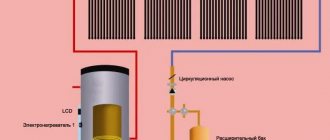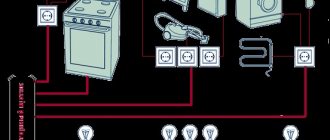Buying electronics and household appliances in the United States is a very common phenomenon today, since prices for mobile phones, tablets, laptops, electric shavers and much more are sometimes much lower there. In any case, the price tags for Apple products, in particular the flagship smartphone - iPhone, can differ significantly, especially if we are talking about used ones. or "refurbished". But the voltage in the US power grid is 110 volts, versus 220, so common in Russia, Ukraine, Kazakhstan, and indeed throughout Europe. And the shape of the power plug is radically different. What to do? Is the purchase justified? Will this be a problem?
Let's figure it out. Let's start with the main points. Let's start with the fact that in the descriptions of goods sold in US online stores, in particular on Amazon.com, eBay.com and other sites, specifications regarding power supply are extremely rarely indicated. It is not always possible to obtain additional information by asking a question - they may simply not answer you. The fact is that all these products are mainly designed for the domestic market of the United States and it is too difficult for the seller or the online store support service to delve into “some kind of tension there.” Yes, they don't have to. And you can understand them. Therefore, in most cases you will have to answer the question about the advisability of a purchase yourself. But it's not as difficult as it seems. Everything is much simpler. It is enough to remember the following main points.
Today, 100% of laptops, ultrabooks, smartphones, tablets, phablets, trimmers, epilators, electric shavers, wireless speakers and other low-power electrical appliances, regardless of the country of manufacture , operate in the voltage range of 110 - 220 volts and can be used around the world without problems.
Without exception, all powerful electrical appliances, regardless of size, such as a hair dryer, curling iron, iron, dishwasher, TV, monitor, toaster, electric kettle, food processor, coffee maker, desktop (desktop computer), robots and just vacuum cleaners do not have universal power supplies and in the USA they work strictly with a voltage of 100 - 110 volts .
Isn't it difficult? Now, simply focusing on the name of the product, you can answer the question about the advisability of buying it in the USA. Now a little more detail.
Varieties of socket and plug standards
Countries around the world use thirteen different plug and socket standards. The number of elements depends on the difference in current and voltage in electrical networks:
| Socket type | Description | Country of use |
| A – American, without grounding | Two flat plates instead of pins. | USA, Japan |
| B – American, with grounding | There is a central ground pin. | USA, Central America, Canada |
| C – Europlug, European, without grounding | Two round pins. | Europe |
| D | Three round pins (one thick, two thin). | India, Britain |
| E – French | Three round pins (two are located on the plug, 1 is in the socket). | France |
| F – Schuko | Two round pins, reminiscent of type C, have grounding contact plates. | Europe |
| G – English, British | Three pins (two rectangular horizontal, one vertical). | UK, Singapore, Malaysia |
| H – Israeli | The old version had three flat pins located at an angle; the new pins have a round shape. | Israel |
| I – Australian | Three flat pins located at an angle. | Australia, New Zealand |
| J – Swiss | The shape of the plug is special: it differs in the location of the central pin from type F, two round pins resemble type C. | Switzerland |
| K – Danish | Resembles a French Type E socket, except for the ground pin located on the plug. | Denmark |
| L – Italian | Three round pins arranged in one row. | Italy |
| M | Reminiscent of an English socket, but the pins are thicker. | South Africa |
| N – Brazilian | Options of two standards (American and European) are combined, 2 types of connectors and plugs are used for regions with a voltage of 127.220 V. | Brazil |
Checking the wiring and acceptance of the object by the inspector
For some reason, many of our electricians are still convinced that regulatory documents are mostly advisory in nature.
And in some cases, you can supposedly turn a blind eye to them. In the USA, there is a state system of inspection and acceptance of civil housing construction projects.
The main participant in this system is the municipal inspector.
If at your facility there are even the slightest violations of the NEC - National Electrical Code, then simply no one will accept it and will not allow voltage to be supplied to the house.
Neither bribes nor connections will help here. If an emergency with wiring occurs at the site in the future, then this same inspector could easily end up in prison, and the owner of the property will not receive any compensation from insurance.
American sockets and their features
Devices can be connected to various socket standards through adapters and adapters. In different countries, two socket standards are used depending on the voltage and frequency of the electric current:
- European, having a voltage of 220-240 V and a frequency of 50 Hz (types “S-M”). Has two contacts with a diameter of 4.0 -4.8 mm. The current strength in it is 3.5 A. Type C sockets are an outdated version, in place of which new ones appeared: E, F, J, K, L, used in European countries.
- American, where the frequency of the electric current is 60 Hz, the voltage is 110-127 V. The standard sockets are types A-B.
Source: linustechtips.comRose
Alternating current
Another technology, called alternating current, was first promoted by George Westinghouse, who pointed out the incredibly large losses of electricity in the network. The inventor of the first multiphase transformer, Nikola Tesla, managed to work with the authors of both technologies, introducing the first current meter at Westinghouse in 1888.
Interesting: How do eels and stingrays generate electricity?
The famous “war of currents” began after Edison realized that he would inevitably lose the financial battle for consumers.
American socket standard
They consist of two flat holes and a grounding pin (type B). The pins for distinguishing polarity are made of different widths. They are more like plates.
Type "A"
Receptacles are used in North and Central America and Japan, but Japanese and American receptacles differ:
- The pins of the American socket are different in width. This is done to maintain polarity. Tourists use Canadian and American connectors for American plugs, which are not compatible with Japanese sockets.
- Japanese plugs are two flat pins arranged in parallel and of the same size.
The sockets are not grounded and are intended for household electrical appliances with low power.
Type "B"
It is used in Japan, USA, Canada. It is intended for household appliances with high power. The sockets are called NEMA-15.
Electrical appliances operating in the voltage range 100-110 volts
Now let’s consider another version of the situation: the purchased electrical appliance is designed strictly for a voltage of 100-110 volts. These are all large stationary electrical appliances that rarely travel between continents. In addition to televisions with washing machines, this includes small but powerful electrical appliances: irons, hair dryers, curling irons, electric kettles, toasters, vacuum cleaners.
This problem can be solved, but not as easily and cheaply as with an adapter. You will be helped out by purchasing a special device, the so-called. a step-down transformer, which converts the mains voltage of 220 volts, automatically lowering it to the 110 volts required by the device. After purchasing such a transformer, you no longer need to buy any adapters, because All the necessary connectors are already on the device.
On the user’s side, no settings are required other than connecting the power plugs; you just have to connect the existing electrical appliance to the network through this transformer each time. But the point that must be taken into account when purchasing is the power of your electrical appliance.
For powerful electrical appliances, a higher power . You need to determine the maximum power of your electrical appliance, which is usually indicated in Watts (look for “W” or “Watt”) and, based on this information, buy a step-down transformer.
The dimensions of step-down transformers vary. For low-power electrical appliances - up to 150-200 Watt (printer, copier), it is slightly larger than a conventional power supply, and for higher power, for example 1000-3000 Watt (hair dryer, vacuum cleaner), its dimensions can reach the size of a two-liter juice box.
This is what a standard low-power step-down transformer looks like. Please note that all such devices already have an American standard plug connector.
But here is a step-down transformer of higher power, designed for as many as two electrical appliances.
Trademark "Shtil", Russian Federation.
Step-down transformers are usually not easy to find in electrical stores. It’s easier to order online, for example with free delivery; they are available in Chinese Aliexpress or the Amazon hypermarket. Cost from $20, for devices with a power of up to 200 Watts. The more powerful the connected device, the more expensive the transformer; for example, for devices with a power of up to 3000 watts it will already cost from $100.
Just as in the case of adapters, you shouldn’t save much here. You risk getting a problem.
And finally, answers to several common questions.
Does a step-down transformer affect performance? Will the connected device deteriorate over time?
Of course not, on the contrary, the transformer here will play the role of a voltage stabilizer. So, if the power is selected correctly and a good, high-quality transformer is purchased, then everything will be fine.
When is it justified to purchase an electrical appliance that requires a step-down transformer?
This is usually an expensive piece of equipment, but you can save a lot of money when purchasing it. Or devices that are simply not available on the domestic market. There is no point in buying a simple 110-volt vacuum cleaner in the USA, paying for its delivery, and then purchasing a step-down transformer for $100.
I found electrical appliances designed for 220 volts in the USA. Can I buy them?
Yes, there are such products and even entire stores. Of course you can buy. Usually these products are already equipped with a Europlug.
What happens if a device designed strictly for 110 volts is connected to a 220 volt network?
You risk simply ruining it. There may be other consequences. It's better not to try. It definitely won't work.
Countries with different types of sockets
Not all countries apply these standards, so tourists have to use adapters and transition devices. These include:
- South Africa, Lisotho, and Swazeland use the M type standard; the sockets resemble the D type used in Britain and also in India, but with thicker pins. Type D plugs are compatible with these connectors.
- Brazil N type plugs and connectors combine American and European standards at 127.220V and use 2 types of connectors.
- Israel has its own type H. The old version of the plugs has 3 flat pins. In the new version they are round. The Type C plug is compatible with the Type H connector.
- Denmark as well as Greenland use type K sockets, with which CEE7/7 and CEE 7/4 plugs are compatible. It resembles the French type F, except for the ground pin located on the plug.
- In the UK, Malaysia, Jordan, Malta, Cyprus, Hong Kong, Singapore, the British type G is used with a current of 32 A with three pins, one vertical, two horizontal rectangular). When visiting these countries, tourists use adapters.
- Type D sockets are used in India, Namibia, Nepal, Sri Lanka. This is an outdated British type. Their current strength is 5 A. They have round pins, one of which is thick, two thin.
Source: sergeydolya.livejournal.com
Thai socket type O
Problems with the power supply to household appliances arise after arriving in foreign countries that have their own standard of sockets. One of them is Thailand, where they use sockets of types A, B, C (220 V, 50 Hz). They have 2 main types: with three and two holes.
Thai connectors have differences from European standards. Local adapters will be required. But it’s gratifying that the sockets in Thailand include:
- Chinese flat plugs;
- Some sockets may fit the plugs that are used in the CIS.
- You can use Soviet standard plugs that have thin round pins.
Type O sockets are used exclusively in Thailand. They cannot be combined with types E and F. It is grounded (16 A 220-240 V), compatible with plug types C and O.
Australian type I sockets
They are used in Australia, Fiji, New Zealand, China, Samoa, New Guinea, Kiribati, on the Cook Islands, where there are also types A and C, they have 3 or 2 pins. The third is grounding (10 A 220-240 V). Type I plugs are compatible with the connector.
Swiss type J sockets
Applicable in Switzerland, Rwanda, Liechtenstein. They have 3 contacts, grounding (10 A 220-240 V). J and C plugs are compatible with the connector.
Italian sockets type L
Used in Chile and Italy, has 3 contacts, grounding (10 A and 16 A 220-240 V). 10 A sockets are compatible with L and C plugs. 16 A sockets are compatible with L sockets.
Fire alarm in a residential building
According to statistics, there are several times fewer fires caused by faulty electrical wiring in the United States than in our country. Although the total number of fires is 1000 people more.
Particularly sad comparisons are observed for deaths due to fires.
This situation may be due to our lack of regulatory requirements for the installation of fire protection systems and detectors in private homes.
If you are building or remodeling a home in America, you are required to install at least one smoke detector in each bedroom and kitchen.
And if your heating is autonomous and not electric, then there is one more carbon monoxide detector in each bedroom.
For any major repair they are required to install sensors connected to each other. That is, if one works, then the alarm signal should be transmitted to the others.
Think about it, how often do you see fire detectors in private homes in our country?
Inspectors mainly check the installation of smoke and fire detectors in public spaces with large crowds of people: dormitories, hospitals, clinics, sports facilities, offices, libraries.
In some regions, when supplying gas to a private house, it may be necessary to install some sensors in separate rooms. Otherwise, gas connection will not be allowed.
However, their further operation and inspection falls entirely on the owner. Many of their sensors run on 9V batteries, and after a year the batteries die. Few people pay attention to this in a timely manner.
In addition, such sensors without a full-fledged system are still a half-measure. When the buzzer is triggered, it will only be heard by the person directly in the room.
The use of American household appliances in the CIS countries
American-made household appliances are exported to the CIS and brought by travelers. To use it, you need to purchase a European standard adapter device. A US plug will not fit into a European socket. It is better for tourists to purchase an adapter at home, since their cost in America is at least $5. This is true for staying in hotels in America. A similar situation awaits Americans in Europe.
Source: Novito.ru
Transitional devices are a way out for staying in a foreign country. It will help save time, nerves and money. Your vacation will pass without unnecessary worries if, before your trip, you rely on a summary table with information about sockets, current strength and voltage in different countries of the world.
Universal electrical appliances operating in the voltage range 110 – 220 volts
Take any laptop, smartphone or trimmer, look at the information that is present on the charger or power supply. You will find there a range of permissible mains voltages for safe operation. Look for the "INPUT" line. Usually this is 110 - 220 volts, or 100 - 240 volts.
Here is a standard Samsung smartphone charger. In the column of the permissible input voltage - “INPUT”, the range from 100 to 240 volts is indicated. This means that you can use it anywhere in the world without any problems.
The Apple iPad tablet charger looks similar, the same voltage range: 100 - 240 volts.
Or any electric razor, be it Philips, Braun or Panasonic, still the same 100 - 240 volts.
You don’t have to bother searching for data on the operating voltages of wireless speakers, laptops, winders (a device for winding mechanical watches), video and cameras. Everywhere you will find a universal operating voltage range.
You can also ignore the second parameter, namely the current frequency, indicated in hertz; it is universal throughout the world and amounts to 50-60 hertz.
Conclusion? You can purchase small electrical appliances without hesitation. You can immediately plug them into a power outlet if you have a special adapter for the power plug.
